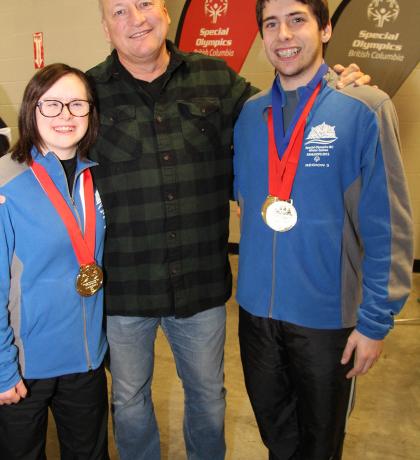
By Jacques Thibault, Special Olympics BC Sport Consultant
Jacques Thibault, an internationally recognized training and speed skating expert with a Master’s degree in science, works with Special Olympics BC athletes and coaches to help empower them to be their very best.
We have seen that there are three important paths to produce energy:
1) ATP-CP system,
2) Anaerobic system,
3) Aerobic system.
This month, let’s look at the anaerobic system.
Anaerobic and anaerobic-aerobic endurance are a measure of the ability to endure high-intensity effort from 10 to 12 seconds to three minutes in length. Events such as track and field’s 200 metre, 400 m and 800 m rely on anaerobic power to sustain a maximal effort throughout the races. When using the anaerobic system lactic acid is produced, which gives the burning sensation in muscle.
Tests
There are many tests to measure athletes’ anaerobic capacity, the following is used in generic sport and can be adapted for swimming, skating, cross-country skiing and running.
The RHIET fitness test consists of six all-out sprints. The athlete sprints 20 m down the track to the target and then returns in the opposite direction to the starting line as fast as possible. These sprints are repeated at 30-second intervals. The drop off between the fastest and the slowest repetition is the anaerobic capacity measurements. A drop off of less than one second is an indication of a very high anaerobic capacity while results over four seconds are indications of poor training preparation.
Training improvements
Heavy physical anaerobic training results in increases in ATP and CP stored in muscles and the body is able to handle higher amounts of lactic acid. This is due to enhanced levels of fuel (muscle glycogen) and anaerobic enzymes. Also, training may result in improved motivation and “pain” tolerance to higher amounts of lactic acid.
Improving anaerobic power and anaerobic-aerobic endurance can be done both during Special Olympics practices and at home. The goal is to train at racing speed. From experience, one of the major mistakes that SO athletes make is to train at a too low intensity to actually develop the anaerobic system.
The following programs are examples of anaerobic power and anaerobic-aerobic endurance workouts. They are all high intensity in nature and will demand effort, concentration and motivation to be completed properly. The goal of these sessions is to practice at race speed and to repeat the intervals as consistently as possible. They are difficult and will result in high fatigue level.
Anaerobic system examples:
Training #1 hill run
- Three very fast runs of 45-feet up a steep hill with rest of three to five seconds after every 45 feet.
Training #2 Specific intervals for 400 m
- Run 300 m at race speed of 400 m and rest three to five seconds, then:
- Run 250 m and rest three to five seconds, then:
- Run 200 m and rest three to five seconds, then:
- Run 100 m and rest three to five seconds.
The above examples should be done only once a week after a month or more of training. A good physical condition, competitive focus on personal best and clean bill of health are required before attempting such training.
